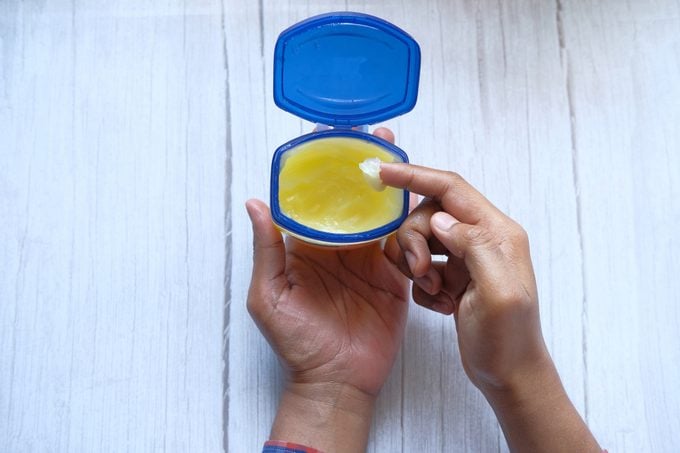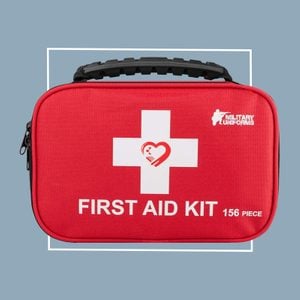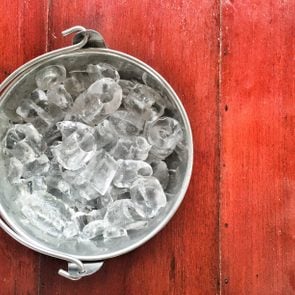8 Ways to Use Petroleum Jelly—and 5 to Avoid
Updated: Jun. 07, 2021
Petroleum jelly can prevent blisters, heal skin rashes, and make mask-wearing more comfortable, but there are times when you should avoid it.
Petroleum jelly is the same as Vaseline
Most people have tub of petroleum jelly somewhere in their bathroom cabinet.
But why is this slippery, oily substance—often called Vaseline, after the popular brand name—considered such a staple?
“Petroleum jelly is an incredibly versatile product,” says skin care expert Alexis Parcells, MD, owner of Parcells Plastic Surgery and a clinical instructor at RWJ Barnabas Health in Metuchen, New Jersey.
Its genius lies in its simplicity. It’s only made up of one ingredient, and because it lacks fragrances, essential oils, coloring, and other additives, it can be used for a wide variety of health purposes.
What is petroleum jelly?
There’s only one ingredient in Vaseline and generic formulations of petroleum jelly.
Petroleum jelly, also called petrolatum, is a semisolid mixture of hydrocarbons created as a byproduct of oil. It isn’t flammable, and it doesn’t have any taste or smell.
Native Americans and ancient cultures used it as a healing ointment for centuries but it was officially patented and marketed as a product in 1859.
Chemist Robert Chesebrough noticed that oil plant workers used “rod wax”—a sticky substance that built up on the oil machinery—to prevent and heal wounds.
He refined the substance into the whitish gel we all recognize today and named it Vaseline. He advertised his “new” product by burning himself and then using the jelly to heal the burn.
Since then, people have used it as everything from a wound treatment to a diet aid, but some uses work better (and are safer) than others.
Risks or side effects
Petroleum jelly can be a trusty first-aid essential for blisters, wounds, and cuts, but it’s not recommended for everyone.
There are people who may have a sensitivity or may even have an allergy to products that contain petroleum. This can manifest in skin irritation.
If you’re not sure whether you have a sensitivity or allergy, do a patch test on your skin before applying the product completely.

Uses for petroleum jelly
People use petroleum jelly in a lot of ways, from healing wounds to restoring ruined household goods. Some uses yield noticeable benefits; others may be ineffective or downright dangerous.
Here’s everything you need to know about petroleum jelly, including how and when to use it properly—and when to avoid it.
Skin moisture
Petroleum jelly isn’t absorbed into the skin so it’s not a moisturizer like lotion.
Instead, it forms an “occlusive” barrier on top of the skin. Putting a thin layer over moisturized skin will help keep your skin soft by preventing moisture loss, says Dr. Parcells.
It’s particularly great for people with sensitive skin or those who are trying to avoid extra chemicals, she adds.
Keep in mind, this probably isn’t something you’ll be wearing during the day. It can look greasy and oily.
If you’re worried about the look, use it as an overnight skin treatment. Just be sure to use bedding you don’t care about staining, as it can leave oily marks.
Mask-wearing
Thanks to the pandemic, many people are spending hours every day wearing a mask, and that can lead to chafing, rashes, and irritation.
Petroleum jelly can protect your face by forming a protective barrier between your skin and the mask.
Medical professionals who used a mixture of petroleum jelly and lanolin on skin that came into contact with tight facial masks and other personal protective equipment (PPE) experienced 30 percent less friction, according to a 2020 study published in PLOS One.
They reported greater comfort and fewer injuries like skin tears, blistering, ulcers, and hives. Regular lotions made the chafing worse, but because it’s not absorbed, the petroleum jelly formed a protective layer over the workers’ skin.
Try swiping a thin layer any place on your skin where your mask rubs.
(Here’s how to avoid maskne.)
Makeup removal
Is your eye makeup difficult to get off at the end of the day? Try using petroleum jelly on a cotton swab.
Oil naturally dissolves makeup, including waterproof formulations, and it’s very gentle so you don’t need to tug or pull at your skin and eyelashes.
It’s also unlikely to cause a reaction and is safe to use in the eye area, Dr. Parcells says.
Try not to get it in your eyes. It won’t hurt you, but it is hard to get out and can cause blurry vision in the meantime.
Eczema
Eczema is a skin condition characterized by itchy, red, and sometimes painful rashes. The rashes can be made worse by a variety of irritants in the environment, including weather, clothing, water, and skin products.
The No. 1 way to help eczema is to protect the skin while it heals. And one simple, effective, and affordable way to do that is by applying a thin layer of petroleum jelly over the affected area, according to a 2017 study published in JAMA Pediatrics.
Diaper rash
Diaper rash happens when skin is kept in a moist environment with little air circulation—like in a diaper—for a period of time.
Protect sensitive baby skin against diaper rash by applying a thin layer of petroleum jelly.
You can also use it to treat existing diaper rash by cleaning and drying the affected area, then applying the jelly. (Did you know adults can get diaper rash too?)
Wounds
Applying petroleum to small cuts, scrapes, and burns can prevent scabs and scars from forming, says Dr. Parcells.
If your wound is open or appears infected, use a petroleum jelly product that also contains antibacterial ingredients, like with Neosporin, she says.
Make sure your skin is dry and clean before you apply petroleum jelly. Fungal or bacterial infections can occur if you don’t follow proper wound care. Here’s how to tell if your cut or scrape is infected.
Chafing during exercise
You never notice exactly how tight the elastic on your underwear is, where your shoe rubs your heel, or just where the hem on your shorts hits your thigh until you’re three miles into a five-mile run—and by then, the damage is done.
Prevent painful chafing, rashes, and blisters during exercise by rubbing a thin layer of petroleum jelly on pressure points before putting on your workout clothing.
It’s especially helpful for minimizing friction from skin-on-skin chafing, like between your inner thighs.
Lip balm
One of the most popular uses for petroleum jelly is to protect the sensitive skin on your lips from harsh environmental conditions.
Whether there’s aggressive air conditioning in your office or it’s a cold, windy day outside, your lips are more exposed to the environment than other parts of your body and lose moisture faster, says Dr. Parcells.
Protect them with a layer of petroleum jelly.
When you should not use petroleum jelly
Think twice before using petroleum jelly for the following reasons. In some cases, it may not be effective. In worst-case scenarios, it can be dangerous.
As a lubricant for sex
Don’t use petroleum jelly as a lubricant during sex, says Eric Weiss, MD, a reconstructive and general surgeon and chief of plastic surgery at Naval Hospital in Jacksonville, Florida.
The biggest reason to avoid turning Vaseline into lube: petroleum jelly weakens and damages polyurethane and latex condoms, making them more likely to fail. This could increase your risk of exposure to sexually transmitted diseases.
In addition, petroleum jelly can be greasy, stain sheets and clothing, and also isn’t as smooth as lubricants made specifically for sex. Experts generally recommend water-based lubricants designed specifically for sex because they won’t damage condoms or silicone-based sex toys.
As a way to treat lice
Slathering the hair and scalp with petroleum jelly is a popular home remedy for treating head lice.
It’s said to work by smothering the lice and killing them. Unfortunately, this doesn’t really work, according to a 2016 analysis of 579 studies on lice treatment, published in Pediatric Dermatology.
While the lice may appear to die, in reality, they’re just not moving and may “resurrect” once the jelly is washed out, the study authors noted.
As a way to lose weight
Some boxers and other athletes who need to lose weight quickly swear by smearing petroleum jelly on their skin, wrapping themselves in plastic wrap, and doing intense cardio exercise or sitting in a sauna.
The idea is that it will intensify the heat and increase sweating. Even if it does do that, which is debatable, it’s only making you lose water weight.
The small benefit is outweighed by the extreme risks of becoming dehydrated and overheated, says Dr. Weiss.
Some people will also advise eating petroleum jelly as a way to promote fullness. Don’t do that either. It’s not toxic, but it is high in calories (about 100 calories per 1.5 ounces) and if eaten in large amounts can lead to choking or cause loose stools.
On acne-prone skin
“Petroleum should be avoided in people with oily, acne-prone skin, as it can worsen or cause the formation of clogged pores,” says Dr. Parcells.
Adding more oil to the oil on your skin can compound acne. Instead, talk to your dermatologist about moisturizers designed for your skin type.
In your nostrils
Never use petroleum jelly in or around nostrils, especially on children, says Dr. Parcells.
You may end up with a condition called lipid pneumonia, an infection caused by the inhalation of fats. Though rare, it can lead to serious and long-term health problems.
Next, these are the common first aid mistakes everyone makes.




